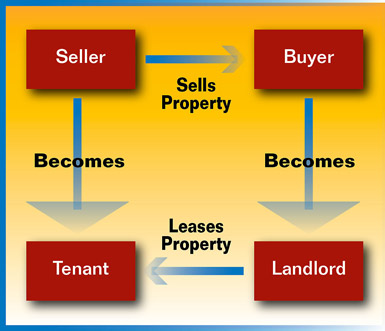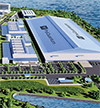Frontline: Sale-Leasebacks Allow Companies to Redeploy Capital
Q2 2016

One recent example was Smithfield Foods Inc.’s $43 million sale and leaseback of a new, 419,052-square-foot cold storage distribution center in Greenfield, Ind. Centurion Investments, LLC, a private real estate investment firm based in Arlington, Va., acquired the property and is leasing it back to a subsidiary of Smithfield.
When the deal was announced earlier this year, Smithfield’s Vice President and Corporate Treasurer Tim Dykstra said the sale-leaseback would allow the company to “redeploy capital and fund strategic initiatives to further enrich our core business offerings” — in other words, use the money where it would do the most good.
When Smithfield built the facility, the company was unsure whether it wanted to keep it long-term or sell it, according to Cushman & Wakefield Vice Chairman Scott Goldman, who helped with the deal. But, the current low-interest-rate environment, combined with strong investor demand for state-of-the-art facilities occupied by solid credit tenants, made for an “excellent” opportunity for Smithfield, Goldman says. Along with freeing up capital, a lease transfers the risk associated with ownership to the investor/owner, according to Goldman.
Investors and institutions consider corporate real estate that is leased back to the seller a solid investment. Unique Challenges
The Smithfield deal was not without challenges, Goldman says, noting, “every major project presents unique issues and challenges. Before closing, we had to negotiate easement rights over a nearby water tower. However, there weren’t any monumental setbacks that prohibited Smithfield and Cushman & Wakefield from executing the transaction as planned.“
According to Goldman, the sale-leaseback strategy is suitable for credit-worthy corporate users that occupy high-quality, state-of-the-art facilities and are interested in redeploying capital toward expansion and other higher-return projects. It’s also an excellent exit strategy for companies, he notes.
Investors and institutions consider corporate real estate that is leased back to the seller a solid investment. In the single-tenant, sale-leaseback market there are a number of significantly funded institutional, public, and private groups that exclusively purchase and own single-tenant assets. “It’s a very ‘niche’ market,” Goldman says. Buyers include private and public REITS, private investors, and institutional and foreign investors.
Creative Deal Structuring
In some situations, however, more creativity in deal structuring is required due to specific factors. One example of flexible, creative deal structuring is development financing, which occurs when the sale-leaseback of an existing building that was already under construction is executed. This is a more inclusive approach for a seller and involves a hands-on investor that can buy the land, develop it into a tailored asset, and lease it back to the seller.
Another example of a creative deal structure includes earn-out security deposits; this is a credit-based agreement that eliminates uncertainty for the buyer by linking the risk and return directly to the performance and earnings of the tenant.
Project Announcements
Alltech Expands Jessamine County, Kentucky, Manufacturing Operations
07/30/2025
Liatris Expands Rockville, Maryland, Manufacturing Operations
07/30/2025
China-Based Eco King Solutions Plans Robbinsville, North Carolina, Production Operations
07/30/2025
Hood Container Upgrades West Feliciana Parish, Louisiana, Operations
07/29/2025
MR6 Tech Services Plans Huguley, Alabama, Manufacturing Operations
07/29/2025
Adient Plans Normal, Illinois, Production Operations
07/29/2025
Most Read
-
20th Annual Area Development Gold and Silver Shovel Awards
Q2 2025
-
In Focus: AI Is Changing Incentives Math
Q2 2025
-
Optimizing Your Rail-Served Transportation Network: Strategy Before Steel
Q2 2025
-
How to Choose the Right Site for Your Factory in 2025’s Volatile Landscape
Q2 2025
-
From Silicon to Server: Mapping the Data Center Supply Chain
Q2 2025
-
Tariffs, Talent, and U.S. Expansion
Q3 2025
-
First Person: David Robey, Co-CEO of QTS Data Centers
Q2 2025



